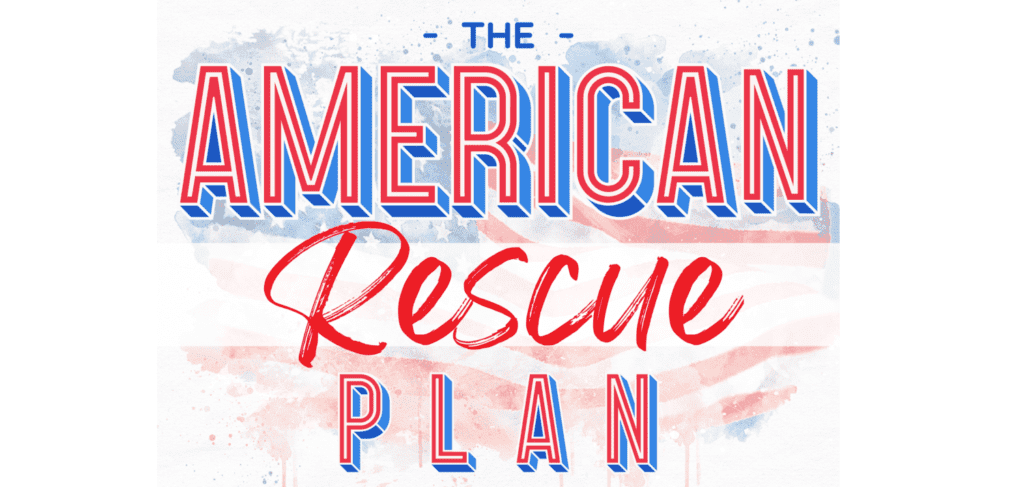The American Rescue Plan Act is a significant step toward addressing the ongoing economic and health crises triggered by the pandemic, and includes systemic educational reforms that are sorely needed in the face of entrenched inequities. The law contains several provisions that will be extremely beneficial to students, educators, and families, especially for students from low-income backgrounds, students with disabilities, students experiencing homelessness, and students of color. This historical investment in American education allows stakeholders the opportunity to start a new recovery and renewal of our education system. Here’s what it means for students and families:
Targeted Investment in our Educational Systems Designed to Accelerate Learning and Increase College Access
The American Rescue Plan Act makes much needed investments in our nation’s educational systems. The law allocates approximately $125 billion for K-12 education, and disperses nearly $40 billion to institutions of higher education and college students. These investments, combined with investments made in 2020, give our nation’s schools and colleges the best possible platform to return to safe, in-person learning as quickly as possible.
The funds are generally flexible in their use, which is appropriate given the multi-faceted nature of the challenges facing state and district administrators. The K-12 funds will be allocated to states and districts based on the share of funding they receive under Title I of the Every Student Succeeds Act (ESSA), while over 90% of the higher education funds will flow to public and private nonprofit institutions, with half of those funds dedicated to emergency student aid.
However, there are some key funding streams dedicated to addressing problems that must be solved in the coming years, like significant interrupted instruction. In particular, the law requires 5% and 20% of the allocations for state educational agencies and local educational agencies, respectively, to be used to address “learning loss” for underserved students. States and districts have an obligation to complete unfinished instruction for their students, and this funding should be used for critical evidence-based interventions, like targeted intensive tutoring, high-quality extended learning time, and building strong relationships between students and families with educators and leaders.
Additionally, the law contains:
- $1 billion for the Corporation for National Community Service and the National Service Trust, in part to train and utilize AmeriCorps members as tutors across the country
- Dedicated funding to enable schools to offer evidenced-based summer and after-school programs
- $800 million for students experiencing homelessness, a necessary and sizable increase over existing funding levels
- Approximately $3 billion for programs funded through the Individuals with Disabilities Education Act to address the specific issues created by COVID-19 for students with disabilities
Protection for Students of Color and Students from Low-Income Backgrounds and the Educators Who Serve Them
In the wake of the Great Recession of 2008, districts and schools that served the most underserved students in the country were disproportionately subjected to devastating budget cuts. This time around, with the opportunity to do more to protect those students, Congress enacted two critical fiscal policies: maintenance of effort and maintenance of equity that now apply to states in receipt of this new funding.
The maintenance of effort provision is designed to ensure that state spending for K-12 education and higher education represents at least the same share of total state spending in FY22 and FY23 as it did, on average, in FY17, FY18, and FY19. This allows for some flexibility within state budgets, but ultimately ensures that education remains the same proportion of a state’s budget as it was before the pandemic.
The maintenance of equity provision is a recent innovation and has several different facets, but its goal is to avoid repeating history and protect high-need districts and schools from disproportionately bearing the weight of any cuts to funding (or staff) that states or districts make. The provision is in direct response to disproportionate and uneven cuts triggered by the Great Recession: an analysis of layoffs in Los Angeles found that Latino elementary students were 26% more likely than their White peers to have their teacher laid off, and Black elementary students were 72% more likely than their White peers to have their teacher laid off.
Now, states must ensure that any cuts to state funding in FY22 and FY23 for “high-need” school districts are less than the overall reduction in state funding across all districts in the state, on a per-student basis. This is a similar proportional approach to the maintenance of effort provision. High-need districts are defined as the districts with the highest percentages of economically disadvantaged students that collectively serve 50% of the state’s students. States are also required to protect “high-poverty” districts, defined as the districts serving the highest percentages of economically disadvantaged students, by requiring they receive at least as much state funding in FY22 and FY23 as in FY19, on a per-student basis. Finally, certain districts are also required to prevent disproportionate cuts in funding or staff from their highest poverty schools. These provisions combine to add layers of protection for students attending under-resourced districts and schools, ensuring that budgetary cuts, if needed, affect their education as minimally as possible.
Closing the Digital Divide
A report released in late 2020 by UnidosUS, Alliance for Excellent Education, National Urban League, and National Indian Education Association found that roughly 16 million K-12 students lack high-speed internet at home. Even before the pandemic, 79% of White households had reliable access to broadband at home, compared to 66% of Black families and 61% of Hispanic families. That has affected, and will continue to affect, the ability of students, especially students of color, to participate in online learning, both during the ongoing pandemic and beyond. After a long period of advocacy from hundreds of stakeholder organizations and students and families, Congress appropriated $7.1 billion to the E-Rate program to enable home broadband connectivity for K-12 students, and spending on technology and connectivity is an allowable use of overall education funding for districts. This funding will be an essential step to connecting all students and closing the homework gap for good, and the FCC should ensure that this funding is deployed equitably in support of high-speed home broadband and devices for underserved students.
Increased Access to Food Assistance and Childcare for Students and Families
The onset of the pandemic put the millions of students and families who were already food insecure and/or lacked access to affordable childcare under severe pressure almost instantly. More than 30 million students depend on schools for their meals every day, and 1 in 4 families experienced food insecurity in 2020. Furthermore, by April 2020, 60% of childcare providers, who are disproportionately women of color, closed; and by July 2020, 40% of programs reported that they are certain they would close permanently without public funding. In December 2020, 1 in 4 childcare centers and 1 in 3 family childcare homes reported that if their enrollment does not increase and they do not receive sufficient funding, they will be forced to close within three months; and 51% of childcare programs owned by people of color reported that they expect to close within three months.
The American Rescue Plan Act responds to these ongoing crises with a host of transformative policy interventions, building on and strengthening prior actions. The law extends the Pandemic Electronic Benefits Transfer (P-EBT) program, a program that a July analysis by Brookings found “reduced food hardship experienced by low-income families with children and lifted at least 2.7 million to 3.9 million children out of hunger” for the duration of the COVID-19 pandemic, and during any school year and subsequent summer in which a public health emergency is declared. It also extends the 15% increase in SNAP benefits passed last year until October 2021, and allows millions of college students to remain eligible for SNAP until 30 days after the public health emergency is lifted.
The law also dramatically increases funds appropriated to address the early childhood education crisis, when compared with prior packages. It invests $14.9 billion for the Child Care and Development Block Grant, and another $23.9 billion for childcare stabilization funding. It also provides $1 billion to states to fund Head Start programs. Most significantly, it expands the Child Tax Credit to millions more families and makes it fully refundable, meaning that during the next year, families will receive monthly payments to help provide for their children.
Reforms to the Higher Education System
While there is more to do to protect students, discharge their debt, and ensure they can access affordable, high-quality education via upcoming legislative and administrative actions, the American Rescue Plan Act closes the 90/10 loophole and suspends taxation of student loan discharges. After a negotiated rulemaking process, as of 2023, GI Bill education benefits will be now be deemed federal educational aid for purposes of the 90/10 rule, which bars for-profit colleges from receiving more than 90% of their revenue from federal government sources. This removes financial incentives that enabled predatory recruiting of student veterans. Additionally, the law suspends the taxation of federal student loan discharges until 2026, ensuring via statute that broad-based debt forgiveness, or any loan discharged through existing processes like income-based repayment plans or via a successful borrower defense claim, doesn’t come with an onerous tax bill that borrowers cannot afford.
Conclusion
The American Rescue Plan Act of 2021 is a step forward in several areas, but ultimately, its success will be determined by the decisions made by administrators and proactive measures taken by advocates. Together, they can accelerate an equitable response to the devastating impact the pandemic has had on students over the last year and may well persist into the foreseeable future without aggressive interventions that center students from low-income communities and students of colors. The funds allocated are assigned to be spent by the end of September 2023 per the statute, which leaves stakeholders about 30 months to plan, designate funds, and execute those plans on behalf of their students. The amount of funding presents leaders with a unique opportunity for creative solutions, and The Education Trust will continue to help and encourage those who are creating new and better foundations that address equity gaps within our systems now and in the future.







